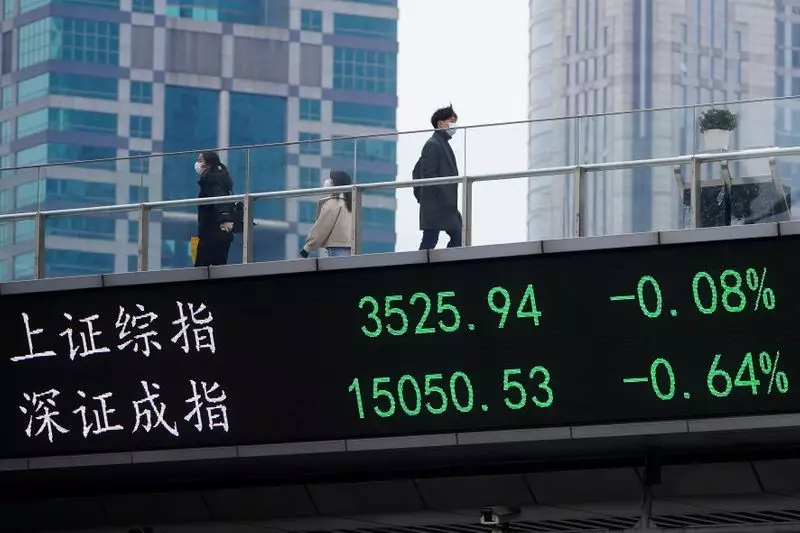The recent trading activity across Asian stock markets has revealed a notable upward trend, especially following the announcement of an array of economic stimulus measures by the Chinese government. On Wednesday, an atmosphere of optimism permeated the regional markets, uplifted by favorable developments in Wall Street, where the technology sector propelled indices like the S&P 500 and the Dow Jones Industrial Average to unprecedented heights. This American market success has spilled over into Asia, setting the stage for investors eager to capitalize on momentum.
Chinese stocks dominated the day’s advancements, with the Shanghai Shenzhen CSI 300 and the Shanghai Composite indexes each experiencing an impressive surge of approximately 3%. Hong Kong’s Hang Seng index also enjoyed a robust gain of about 2.5%. These remarkable upswings can largely be attributed to the People’s Bank of China, which unveiled several impactful measures aimed at invigorating the economy. The central bank’s strategies included a reduction in bank reserve requirement ratios and a decrease in mortgage rates, both crafted to enhance liquidity within the financial system. Given the backdrop of nearly three years marked by persistent disinflation and tepid business activity in China, such measures have incited renewed hopes for an economic turnaround.
However, not all analysts see this as a panacea. Experts at ANZ have warned that while these initiatives are a step in the right direction, they may not suffice to catalyze substantial economic growth. They are advocating for further fiscal interventions to bolster the country’s economic resilience. Despite those cautions, the prospect of renewed investment has encouraged many to engage in bargain buying, especially since the Chinese indices recently trembled under seven-month lows earlier in September.
The positive sentiment surrounding Chinese economic policies has radiated across several other markets in the Asia-Pacific region. South Korea’s KOSPI index demonstrated a slight uptick of 0.2%, while Japan’s Nikkei 225 Index rose by 0.5%. Yet, the broader TOPIX index displayed a more subdued response, remaining relatively flat amid mixed signals regarding inflation. Recent data indicated a modest uptick in producer prices, and market watchers are now turning their eyes toward an upcoming consumer price report from Tokyo, expected on Friday.
Conversely, the Indian Nifty 50 index exhibited signs of resistance, trending toward a muted open as it grappled with the formidable psychological barrier of 26,000 points. This context underscores the complexities of a market driven by investor sentiment and technical milestones.
Australia’s ASX 200 index displayed a less dynamic exchange, amidst China-centric optimism. One of the key factors influencing this subdued performance was the Reserve Bank of Australia’s (RBA) cautious stance on interest rates. Following a decision to maintain steady interest rates, RBA Governor Michele Bullock notably expressed a slight hesitance, opting for a nuanced approach to monetary policy amid persistent inflation concerns. The data released for August hinted at a significant easing in the consumer price index inflation, challenging the immediate outlook for future rate adjustments.
This complicated interplay between local economic conditions and the broader Asian climate illustrates the multifaceted nature of market responses. While sentiment regarding China’s recovery plays a considerable role in shaping investor behavior, underlying factors like inflation rates and central bank policies present significant challenges that could temper the exuberance seen elsewhere.
Wednesday’s trading session revealed a palpable wave of optimism sweeping through Asian equity markets, heavily influenced by China’s strategic economic adjustments. While sentiments are bolstered by the hope for recovery, cautious observations from analysts remind us that prudent investment strategies will necessitate more than just momentary gains. As global markets navigate through a complex landscape of economic indicators and policy decisions, the interplay between national policies and investor sentiment will undoubtedly continue to shape the economic narrative across Asia and beyond.

